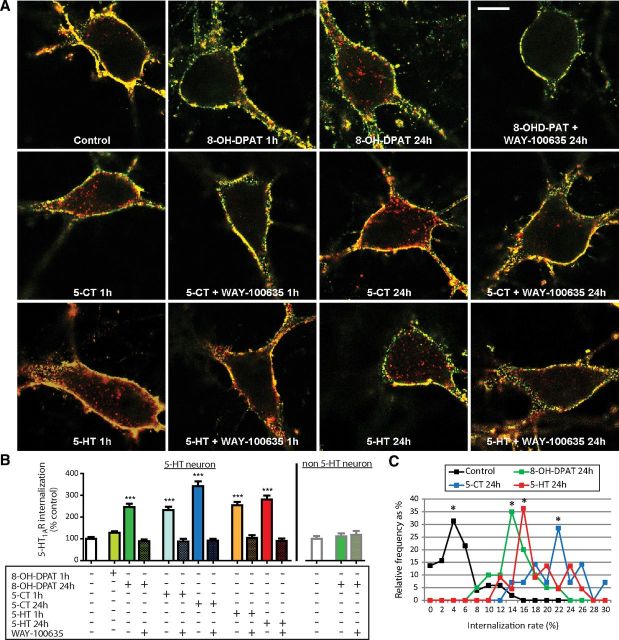Figure 5.
Effect of various pharmacological treatments on BBS-Flag-5-HT1AR endocytosis in transduced neurons from raphe culture at 12–14 DIV. A, Representative confocal microscopy fluorescence images of BBS-Flag-5-HT1AR expressed in serotonergic raphe neurons in control conditions and after acute (1 h) or sustained (24 h) exposure to 5HT1AR partial (8-OH-DPAT; 10 μm) or full agonists (5-CT, 1 μm; 5-HT, 10 μm) alone or in combination with antagonist (WAY-100635; 10 μm). BBS-Flag-5-HT1ARs localized at the plasma membrane were labeled in yellow (red and green colocalization), whereas internalized BBS-Flag-5-HT1ARs were identified by red labeling. Scale bar, 5 μm. B, Quantification of internalized BBS-Flag-5-HT1AR in raphe [serotonergic (5-HT) or non-5-HT] neurons in control conditions and after exposure to drugs. Bars indicate the mean ± SEM independent determinations in n = 21–55 individual cells. ***p < 0.001 as compared with control (Kruskal–Wallis test, Dunnett's test). C, Frequency distribution (as percentage of total number of cells) of neurons displaying internalization rate in control condition or after sustained treatment with agonists (as percentage of control) with a bin width of 2% from 0 to 30% of internalization rate. Stars correspond to internalization peaks in control and pharmacological conditions.

